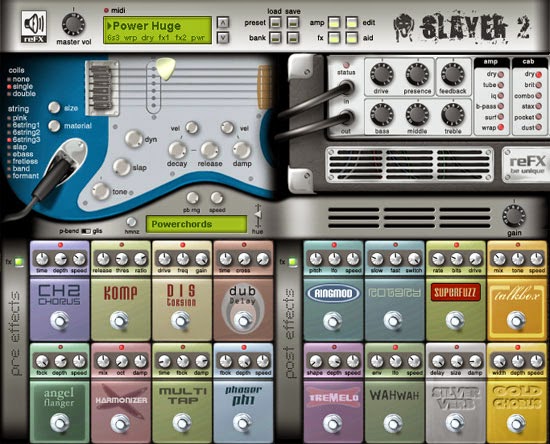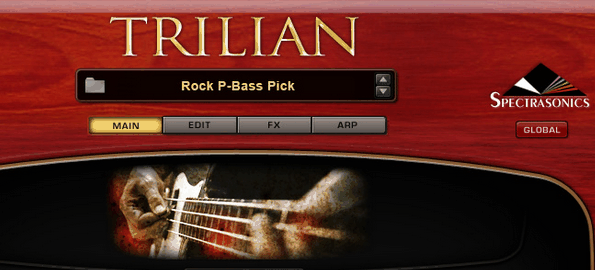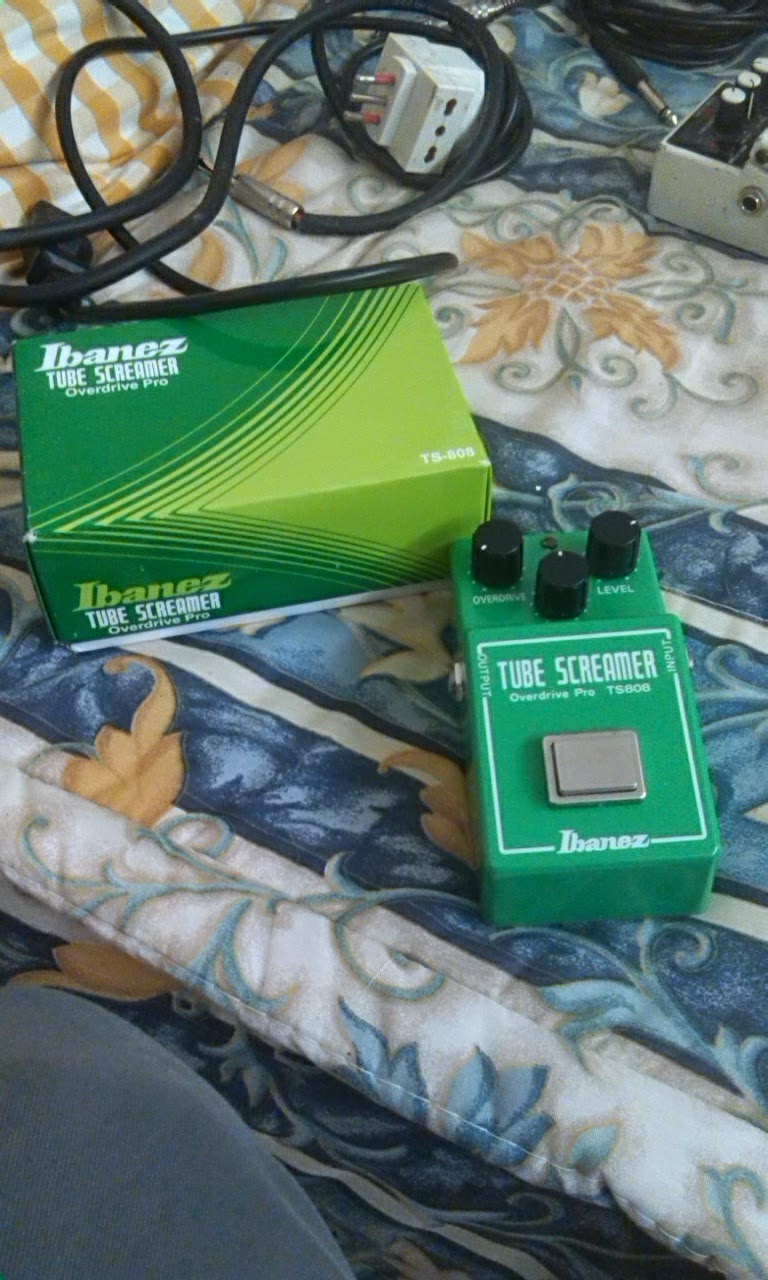Hello and welcome to this week's article! today we're going to talk about
Lefty Williams, a talented guitarist, singer and songwriter from Georgia that was born with only one hand, but that with an iron will decided to pursue the guitarist career anyway, becoming a professional musician very appreciated worldwide.
GuitarNerdingBlog: Introduce yourself to our readers, tell us your story!
LeftyWilliams: I'm Lefty Williams, a guitarist, singer/songwriter based out of Atlanta, GA. I started playing guitar at the age of 4. My father started me out with a few chords and then taught me how to learn by ear. I was born with only a left hand (hence the nickname “Lefty”) and after two years of playing I was at a point where I wanted to play solos like Jimmy Page. So I asked the man who made my prosthetic arms if he had any ideas. He fashioned a device for me that didn't really do what I wanted. But it provided me with ideas on how to make one for myself. So I decided to come up with a way to hold a pick on my own. I went through many different variations on the basic idea and my grandfather had a few ideas as well. Eventually I landed on the design I use today. If you go to my website
www.lefty-music.com there are instructions on how I build my picks.
GNB: Tell us about your career. We know you've already published two albums ("Big Plans" and "Snake Oil"), and your style is an interesting mix between blues, jazz and rock.
LW: My playing career started like most, in middle school and high school. I was in various bands that played locally and tried to build a following with grassroots efforts. In 1998 I became frustrated with life and where I was in my musical journey and decided to attend the Atlanta Institute of Music. That experience gave me the kick in the pants and industry know how that I needed to push farther and become a regional musician. After I graduating A.I.M. I put a band together called “Nothing Simple” and immediately hit the road. Like many bands we began by hitting up other parts of our home state playing in college towns and the like. Then Nothing Simple expanded out to Alabama, North Carolina, South Carolina, Tennessee, and Florida. After a few years of frustratingly slow growth, we disbanded. When Nothing Simple ended I found myself tired of being a band leader and wanted to find a group where I could fit into the background and just play. Through a friend, I heard that Wayside Riders were looking for a guitarist. Since that band was formed by several of the original members of local jam band heros “The Grapes” I jumped at the opportunity. I toured with Wayside Riders for 3 or 4 years before that group disintergrated as well. It was at this point that I realized that if I was the main guy, then the band couldn't ever end unless I wanted it to happen. So I decided to start my own band under my own name. Being the main guy also enabled me to experiment with various styles of music without restriction. I'm a lover of all kinds of music so this was particularly attractive to me. I think that jumbling up different styles gives me a sound that is familiar yet unique and fresh. At least that's what I'm shoot for. I released my first CD “Big Plans” in 2006 and recieved some fantastic response for it. I toured full time on Big Plans until 2008 when I released “Snake Oil.” “Snake Oil was recieved even better than “Big Plans” garnering articles in Guitar Player Magazine and Vintage Guitar Magazine. “Snake Oil” was also nominated for Homegrown Music Network's “Album of the Year 2009.” Shortly after that I was interviewed by CNN and the feature piece went all over the world. The next few years found me touring and writing constantly. By 2012 I had 25 songs that had not been recorded yet. At this point I decided to seek out a producer and a label. I found Ashley Dennis (a local Atlanta producer with a credential list a mile long) who signed onto the project after hearing only 4 out of the 25 songs. And after a single meeting with Paul Diaz at Tree Leaf Music I was signed to a multi album deal. We hit the studio late 2013 and made the best recording of my career. My new EP titled “All In” will be released in August of 2014.
GNB: Which are the moments that you consider your career highlights? Which are the artists that influenced you the most? Is there still some collaboration that you'd wish to do?
LW: Playing in the Everyone Orchestra with Ryan Stasik (Umphrees McGee), Jeff Sipe (Phil Lesh and Friends), and Jennifer Hartswick (Trey Anastasio Band) was a pretty big deal for me. Jamming with Oteil Burbridge (Allman Brothers) was awesome. Opening up for Blackberry Smoke was huge. Headlining the Bud Light stage at Riverbend Festival and playing to 40,000+ people was pretty awesome too. As far as influnces go I try to pull from everything. Blackberry Smoke and Black Country Communion are both very influential for me right now. I would love to write something with Charlie Starr or Glen Hughes. But the old standbys are always Led Zeppelin, Pink Floyd, and The Allman Brothers.
GNB: You're a very talented guitar player, and you've managed to turn what for others could have been an insuperable obstacle into a simple particularity of your style. Tell us about your love for this instrument, how did you learn to play it and your favourite models! Thank you for the kind words.
LW: As I mentioned before my father was my first teacher. He loved to play and I think that bled into me as well. But I was truly hooked from the first time I ever made a chord ring out. Music entrances me. I don't care about genre or style. If it's good, it's just good. I feel the same way about instruments and I'm working to build my collection. Right at this moment I have a signature model Curbow Petit that is an amazing instrument. It was built for me by Doug Somervell. It's a beautiful work of art. I also have a 1972 Gibson SG that is my current favorite electric, a 2002 Les Paul Smartwood, a 2011 Epiphone SG that I love, a Martin electric acoustic, and lastly, my most treasured guitar is a Taylor 710CE that my wife bought for me as a Christmas present when we were just dating. I'm jonesing for a Tele and a Firebird. I also want a Gibson Flying V. Heck... I'll take one of everything ha ha.
GNB: What do you think about the state of the music business? What are your thoughts about today's underground and mainstream music scene?
LW: I really don't know what to think about the state of the music business. I only know that I'm doung my best to adapt and keep up. Change is inevitable and good in my opinion. We may be on shaky ground now but eventually balance and harmony will return to the music business and a better business model will emerge that benefits the listener, artist, and labels.
GNB: What do you think about the digital music distribution? And what about the file sharing? How do you think the music business will evolve in the future?
LW: I like the idea of digital music and file sharing. But it can pose problems if people only share files without attending shows, buying t-shirts, and CDs. I'm not a greedy person by any stretch of the imagination. Anyone who knows me will tell you that I'm the kind of guy that will give you the shirt off my back and offer my coat as well. But I have to be able to pay my bills in order to continue making music. So, if you like what I do, and you want to share that with your friends, that's awesome. Thanks! Just please come to the live show when I come to your town and buy a ticket, shirt, and a CD so that I can keep making records for you to share and download for free.
GNB: Let's talk about live music! Which have been the best gigs you have ever played? Do you consider yourself more a live musician or a studio one?

LW: I love both the live and studio environments. I feel that I get different satisfaction from each type of performance. With my band though, it's all about live. You don't know me until you've seen me live. It's really hard to pinpoint one best gig. There have been thousands of them just in the last 8 years. But playing to thousands of people at some of the bigger festivals are probably some of my favorites.
GNB: Tell us some funny story: which one has been your best/funniest experience as a musician? And your worst one?
LW: Normally I have hundreds of these funny stories but I can't seem to think of one right now. Sorry, you're putting me on the spot with this one and I'm drawing a blank. Lol.
The worst one probably had to be showing up at a venue the day they were closing and them refusing to honor our contract. We had already loaded in, soundchecked, and eaten dinner when they told us that they were not going to honor the contract. I told them if they didn't we would pack up and leave. They said they didn't care so, we left. I did my best to get the word out that the show was canceled but I didn't get it everywhere and I felt bad because a bunch of our fans showed up expecting a show.
GNB: Since many readers or our blog are interested mainly in the tecnical side of the guitar world, can you tell us your studio and live equipment? Can you tell us about the recordings of your latest album?
LW: I have 2 different live rigs that I use depending on the band I'm playing with. I use Tone Tubby speakers. I have a Mahalo 2x12 cabinet that is loaded with a pair of Tone Tubby Alnico Reds and a custom made 4x12 cabinet that is loaded with Tone Tubby 40 40 Greens (ceramic magnet). I have an Andrews Amp Labs Paradyne 50 dual channel 50 watt head. I also have a Lefty Williams signature model Mahalo head rated at 33 watts. My signature Mahalo is their AEM50 with a few very slight modifications. I LOVE both amps. They both have unique voices and play well to different situations. Sometimes I run them together in dual mono with a Radial AB selector box. That... is an awesome sound... but seriuously loud.
GNB: Is there any advice that you'd like to tell to our fellow guitar players?
LW: Practice all the time, work on your ear, and wear hearing protection.
GNB: What does the lyrics of your songs talk about? Do you think that on a song it's most important the lyrical side or the musical one?
LW: My lyrical inspiration comes from everywhere. The things that happen in my life, things I see everyday, the Government, anything can be found as inspiration. So my lyrics really just come from life. I think that a good song can be lyrically driven or musically driven. There are millions of examples of both so I don't think that one really trumps the other. But I do feel that the majority of people identify with the human voice. So they pay attention more closely to words and vocal melody than anything else.
GNB: The interview is over! Tell us about your latest album, projects and tours! Thank you very much and we hope to see you soon live!
LW: My new album “All In” is due out August 21st 2014. We are already selling advance copies to our fans at our live shows. Sao if you want one come out to a show and get one. :)
Lefty Williams








